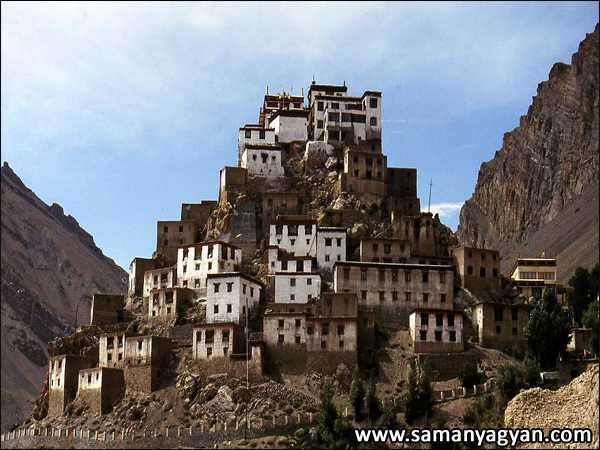Key Monastery Quick Facts
| Place | Spiti Valley, Himachal Pradesh (India) |
| Built/Established in | 11th century AD |
| Architect | Dromaton |
| Type | Cultural, Buddhist Monastery |
Key Monastery Overview
One of the most beautiful states of India, Himachal Pradesh is situated in its northern part. This state is world famous for its spirituality, nature, beauty, and serene environment. Located in Himachal Pradesh, Ki Gompa is one of the most ancient regions of India, which is a famous place for followers of Buddhism.
Key Monastery History
The Kee Gompa or Kee Monastery was founded by Dromtan in the 11th century. The region was first invaded by the Mongols during the 14th century, and about three centuries later they re-invaded the region and severely destroyed the region. At that time this monastery was situated near a village called Rangrik. Later this region had to face many more calamities like war between Ladakh and Kullu, war between Ghulam Khan and Rahim Khan etc.
Key Monastery Interesting Facts
- This Famous Buddhist monastery was founded around the 11th century AD by Dromatan Gyelwe Junge, the chief disciple of the Buddhist teacher Atisha.
- This historic monastery is situated on top of a hill at an altitude of about 4,166 meters (13,668 ft), which adds to its beauty.
- Key Monastery is located in the Spiti Valley of the Indian state of Himachal Pradesh near Lahaul and Spiti district, a river also flows near this monastery, is called Spiti River.
- It is the largest Buddhist monastery in the Spiti Valley and the largest religious training center for Lamas.
- The walls of this monastery are covered with a variety of paintings and sculptures, which is a proper example of the monastic architecture of the 14th century, which was developed by the influence of Chinese architecture.
- According to a report in the year 1855, the presence of about 100 monks was told in this monastery.
- During the war between Ladakh and Kullu in the year 1830, this monastery and the surrounding areas were badly damaged.
- Around 1841, Ghulam Khan and Rahim Khan's army severely damaged this area due to the feud over the power of the Dogra, after which it was also attacked by the Sikhs.
- The area was rebuilding itself after suffering several wars that caught fire in the 1840s, burning the entire monastery to ashes, which was later rebuilt.
- In the year 1975, there was a violent earthquake, which caused a lot of damage to this area, but due to the help of the Archaeological Survey of India and the State Public Works Department, this area was restored again.

